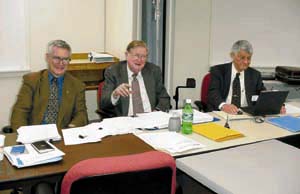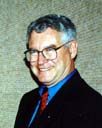
In the world-wide marketplace, many manufacturers would like to have:
This acceptance worldwide would be for both general market distribution of the product and for specific regulatory compliance of various governments. The World Trade Organization encourages government recognition and ac-ceptance of one anothers conformity assessment procedures. This government "recognition and acceptance" can bebased on (1) Government-to-Government (G2G) Agreements and (2) Voluntary Agreements with limited Government Participation.
Mutual Recognition Agreements (MRAs) for Conformity Assessment are examples of these Agreements and several are being developed in the area of Electromagnetic Compatibility (EMC) and Telecommunications.
One of the most well-known MRAs in the EMC world is the US-EU MRA which was signed in December of 1998. The agreement is now in the midst of a two-year transition period which is scheduled to end in December of this year (2000).
The US-EU MRA is similar to other MRAs in that it relies on accreditation as a basis for establishing technical competence and building regulatory confidence. So, when a government "recognizes" another country's products as being acceptable for use in their country, it really means that they have accepted the accreditation bodies of that respective country or "union of countries." This is a result of a Designating Authority (evaluating entity that investigates the accreditation body) having determined that the accreditation body meets the requisite technical requirements of appropriate international standards and has been designated as being "competent and capable of assessing and subsequently accrediting organizations."
 |
Art Wall represents the Federal Comunications Commission (FCC) at the ANSI-ASC C63 committee meetings. Due to the increasing global activity with the MRA programs and others related to EMC, Mr. Wall may often be found during the meeting receiving up-to-date information via phone or e-mail for the Commission's report. |
Conformity Assessment Bodies for EMC have been identified in both the United States and the European Union. In the United States, a CAB must have been accredited to ISO/IEC Guide 25 for specific test methods by either NVLAP or A2LA. (NVLAP is the National Voluntary Laboratory Accreditation Program run by the National Institute of Standards and Technology of the Department of Commerce of the United States Government and A2LA is the American Association for Laboratory Accreditation – a private organization.)
In addition to being accredited to Guide 25, the EMC Conformity Assessment Bodies (EMC CABs) have to also meet "EMC Competent Body" criteria; which are requirements in addition to Guide 25 rules. The EMC Competent Body criteria is focused on qualifying organizations which are capable of performing engineering evaluations including analysis of Technical Construction Files (TCFs). These TCFs are paper dossiers on manufactured products which must be examined thoroughly to determine if non-standard products meet the "intent" of the engineering standards for electromagnetic emissions and electromagnetic immunity.
In the European Union, some countries have detailed requirements for EMC Competent Bodies (for example, in Great Britain there is URN 99/627 – "Guidelines on the Appointment of Competent Bodies.") This document details the minimum requirements for appointment as an EMC Competent Body as well as additional details on the Technical Construction File Route as a Conformity Assessment Procedure.
In the United States, the detailed minimum requirements to be an EMC Competent Body are still being developed; but they will undoubtedly look very similar to the European EMC Competent Body requirements.
MRAs are having a sweeping effect on commerce. Diverse representation of government, industry, and organizations may be found at the ANSI-ASC C63 meetings where up-to-date information on MRAs is reported. Shown seated (L-R) are Don Heirman of Don Heirman Consultants, Herb Mertel of Mertel Associates, and Ed Bronaugh of Siemens Comunications Devices. Standing in back (L-R) are Dennis Camell of NIST, Ken Hall of Hewlett-Packard, and James Thompson of Instrument Specialties. Seated in back (L-R) are Andy Griffin of Cisco Systems and Clark Vitek of CKC Labs. |
The Asia Pacific Economic Cooperation (APEC) Mutual Recognition Arrangement is different from the US-EU MRA in that it is an ARRANGEMENT (not an agreement) and it is Multilateral (between multiple economies.) The 21 economies involved include Australia, Brunei Darussaiam, Canada, Chile, China, Chinese Taipei, Hong Kong-China, Indonesia, Japan, Korea, New Zealand, Mexico, Malaysia, Papua New Guinea, Peru, Philippines, Russia, Singa-pore, Thailand, United States, and Vietnam.
The purpose of the APEC Telecom-munications Equipment MRA is (1) to facilitate trade, (2) to promote market ac-cess, (3) to reduce or minimize non-tariff trade barriers, and (4) to arrive at a Mutual Recognition Arrangement of conformity assessment processes.
All the economies in the APEC Ar-rangement are already in Phase I (Phase I encompasses mutual recognition of test reports). Many econo-mies are ready for Phase II; where Phase II is acceptance of product approvals from one another.
Workshops are being held with respect to this Arrangement (as well as the US-EU MRA) where all parties concerned can learn the intricacies of the acceptance process. These workshops are held in the geographical location of both sides of the agreement so that the educational process can be expedited for both parties.
The APEC Arrangement is similar to the US-EU MRA yet different because it is multilateral, between economies and because it details the designation and monitoring procedures for the ac-creditation bodies.
CITEL is an agreement among 34 American countries including the
 |
Author Dan Hoolihan of Hoolihan EMC Consulting (L) received much of the information for this article from attendance at the ANSI-ASC C63 committee meetings. Dr. Ralph Showers of the University of Pennsylvania (C) chairs the meetigs while Bob Pritchard (R) acts as the IEEE Secretariat to the committee. |
United States and Canada. It is involved with EMC and Tele-communications. CITEL member states are striving to follow the CITEL Guide-lines for Telecommu-nications Equipment Certification pro-cesses, adopted in 1996 by Senior Te-lecommunications
Officials, with a view to facilitating trade in telecommunications goods and services.
The text for an MRA was agreed to in November of 1999 for CITEL. The text is very close to the wording of the APEC Mutual Recognition Arrangement in that it is multilateral, sector specific, and contains Phase I and Phase II stages.
One difference is the concept of "homologation" which is a Product Distribution Requirement.
The world is changing with respect to trading goods and services. Most countries want trade with one another with a minimum of barriers while still protecting the health and safety of their citizens. Most manufacturers want to develop and manufacture products that are safe and useful and they want to market them widely with a minimum of tariffs and non-tariff trade barriers. MRAs are an increasingly popular mechanism for satisfying both sides of the manufacturer/buyer equation on a worldwide basis. EMC
 |
Editor's Note: Much of the discussion on this topic occurs during the meetings of the American National Standards Institute (ANSI) Accredited Standards Committee (ASC) C63 (electromagnetic compatibility). For more information about ANSI-ASC C63 activities, visit their website at https://C63.IEEE.org. To receive their newsletter electronically, contact Warren Kesselman at w.kesselman@ieee.org. Mr. Hoolihan, of Hoolihan EMC Consulting, is a member of ANSI-ASC C63. He may be reached at hoolihan@cornernet.com, phone 651-213-0966.